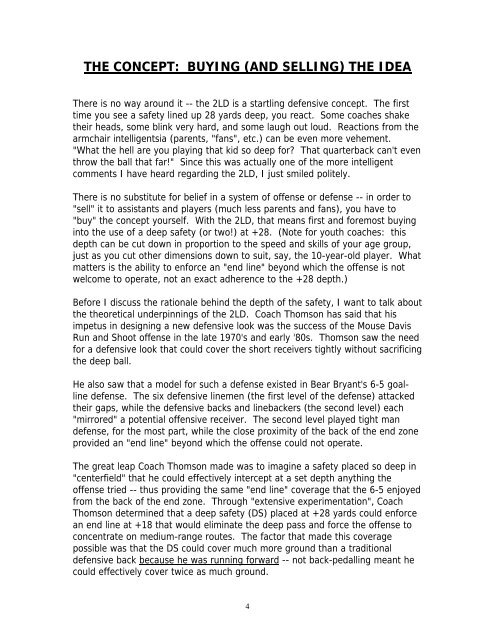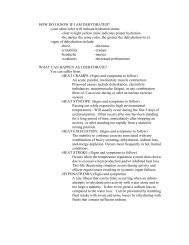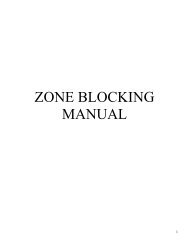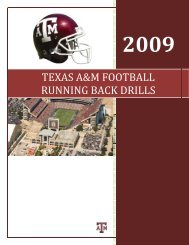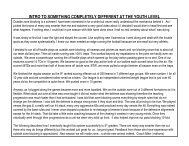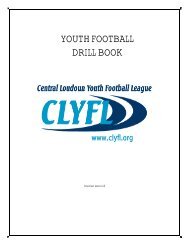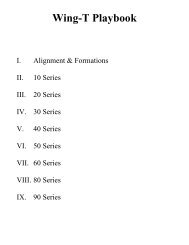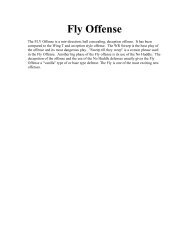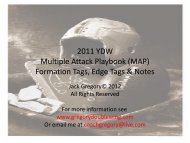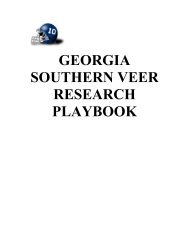You also want an ePaper? Increase the reach of your titles
YUMPU automatically turns print PDFs into web optimized ePapers that Google loves.
THE CONCEPT: BUYING (AND SELLING) THE IDEAThere is no way around it -- the <strong>2LD</strong> is a startling defensive concept. The firsttime you see a safety lined up 28 yards deep, you react. Some coaches shaketheir heads, some blink very hard, and some laugh out loud. Reactions from thearmchair intelligentsia (parents, "fans", etc.) can be even more vehement."What the hell are you playing that kid so deep for? That quarterback can't eventhrow the ball that far!" Since this was actually one of the more intelligentcomments I have heard regarding the <strong>2LD</strong>, I just smiled politely.There is no substitute for belief in a system of offense or defense -- in order to"sell" it to assistants and players (much less parents and fans), you have to"buy" the concept yourself. With the <strong>2LD</strong>, that means first and foremost buyinginto the use of a deep safety (or two!) at +28. (Note for youth coaches: thisdepth can be cut down in proportion to the speed and skills of your age group,just as you cut other dimensions down to suit, say, the 10-year-old player. Whatmatters is the ability to enforce an "end line" beyond which the offense is notwelcome to operate, not an exact adherence to the +28 depth.)Before I discuss the rationale behind the depth of the safety, I want to talk aboutthe theoretical underpinnings of the <strong>2LD</strong>. Coach Thomson has said that hisimpetus in designing a new defensive look was the success of the Mouse DavisRun and Shoot offense in the late 1970's and early '80s. Thomson saw the needfor a defensive look that could cover the short receivers tightly without sacrificingthe deep ball.He also saw that a model for such a defense existed in Bear Bryant's 6-5 goallinedefense. The six defensive linemen (the first level of the defense) attackedtheir gaps, while the defensive backs and linebackers (the second level) each"mirrored" a potential offensive receiver. The second level played tight mandefense, for the most part, while the close proximity of the back of the end zoneprovided an "end line" beyond which the offense could not operate.The great leap Coach Thomson made was to imagine a safety placed so deep in"centerfield" that he could effectively intercept at a set depth anything theoffense tried -- thus providing the same "end line" coverage that the 6-5 enjoyedfrom the back of the end zone. Through "extensive experimentation", CoachThomson determined that a deep safety (DS) placed at +28 yards could enforcean end line at +18 that would eliminate the deep pass and force the offense toconcentrate on medium-range routes. The factor that made this coveragepossible was that the DS could cover much more ground than a traditionaldefensive back because he was running forward -- not back-pedalling meant hecould effectively cover twice as much ground.4


